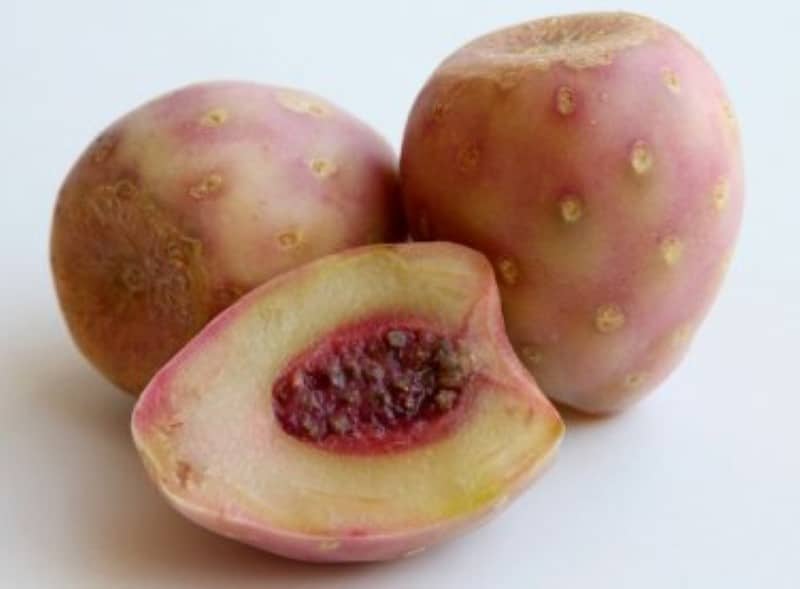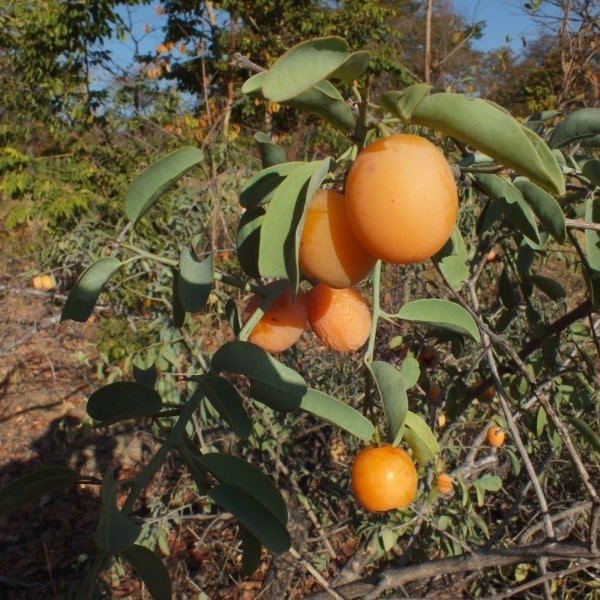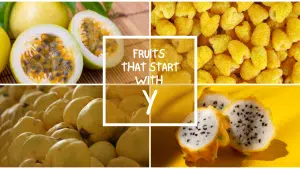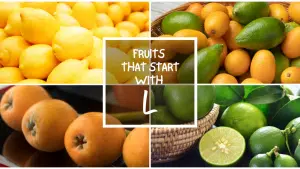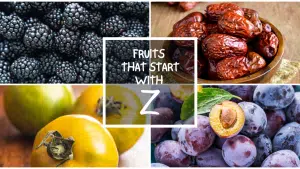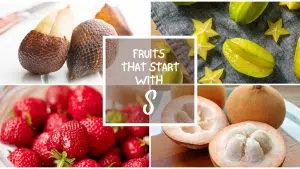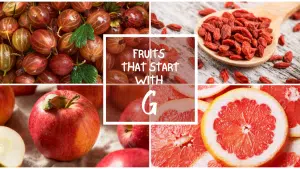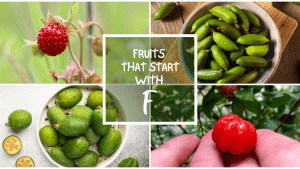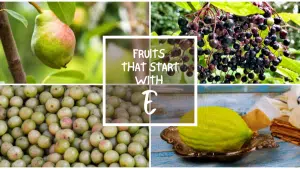All The Fruits That Start With X
Important Note: When you buy through our links, we may earn a commission. As an Amazon Associate we earn from qualifying purchases. Content, pricing, offers and availability are subject to change at any time - more info.
There are various types of fruits globally, but some are rare or unknown than others. Can you imagine that there are almost over 10000 types of fruits, but we only happen to know about only 10% of them. Each fruit contains a unique quality that makes them stand out from the rest, whether it’s their shape, nutritional value, originality, taste, or even the name they are referred to. Here we will go through one unique quality of these fruits: their name, especially the fruits that begin with the letter x.
- Ximenia Caffra
- Xoconostle
- Xigua
- Ximenia Americana
- Xaoy
- Xoài
- Xarello
- Xiangjiao
- Xanthium
- Xylocarpus Granatum
- Xinomavro
- Xing Zi
- Xilacayota Squash
- The Final Letter
Ximenia Caffra
This fruit is commonly referred to as the sour plum, and it grows from a shrub that consists of mainly thin branches with orange-red edible fruit. The tree is fairly hardy; thus, it possesses drought and frost resistance. Ximenia caffara is part of the Oleaceae family that mostly grows in the world’s tropical regions, particularly Kenya, Malawi, Tanzania, Botswana, Mozambique, Zambia, Zimbabwe, and South Africa. The yields from the sour plum tree are on an annual basis. Due to its high potassium levels, the sour plum usually leaves you with a sour aftertaste.
The preparation for eating this fruit involves soaking it in cold water and then you press it to get rid of the seeds and skin. The fruit can be consumed raw, but it’s best if eaten when it’s a bit overripe. You can also mix the pulp with tubers to make porridge. It can also be used to make jam and can be used as a dessert. Ximenia caffra is a rich iron, magnesium, calcium, phosphorus, and potassium source. The fruit is also known to possess curative properties. The tree roots are used to treat abscesses, stomach aches, colic, malaria, coughs, and bilharzia. They can also be pounded, turned into porridge, and eaten to prevent sterility in women reportedly. It is thought that powdered roots can also be added to beer to act as an aphrodisiac.
Xoconostle
Now, this is a strange fruit considering its source. The Xoconostle comes from a cactus plant native to Mexico. It is also commonly known as Opuntia Matudae Xoconostle cactus fruit, found both in the wild or cultivated in home gardens. The fruit is approximately 1.9 to 2.7 inches (5 to 7 centimeters) long. Just like the prickly pear Xoconostle is covered by small spines, and the pulp is usually bright green to pink or peach color.
This fruit has a sour aftertaste, which is preferred in the preparation of sauces and salsas, and the traditional mole sauce is prepared by removing the peel to use the raw flesh for pureeing or roasting. You can also roast the Xoconostle cactus fruit whole in the oven or on a traditional clay Comal. Cut the fruit in half, scoop out the seeds and flesh, and enjoy. The flesh can be used as a savory ingredient in the making of beverages such as green smoothies and juices.
To preserve the fruit, you can candy it or dehydrate it though if you want it to last even longer, you can refrigerate it. Xoconostle cactus fruit is rich in fiber, vitamin C, calcium, and phytonutrients like betalains that offer anti-oxidant benefits. Xoconostle cactus fruit, together with red beets, are sources of pigment betalain (or betacyanin), which has anti-microbial and anti-oxidant properties. These fruits also have several health benefits as they can help lower the glucose level in the blood. Availability of Xoconostle cactus fruit is limited to its native region, specialty stores, small farms, and farmer’s markets in Mexico and the Southwestern United States. They are found growing in the wild throughout their native region.
Xigua

Xigua is scientifically known as Citrullus lanatus var. lanatus. It mostly grows in subtropical and tropical regions of China and some parts of Africa, though it originated from Africa. The appearance of this fruit is similar to that of a watermelon, but the difference is its outer skin is greenish-black while that of the watermelon is green. Xigua also contains fewer seeds than the regular watermelon, and sometimes its flesh may be yellow in color.
The fruit can be eaten raw or pickled, and the rind is edible after cooking. It may also be consumed as a juice or as an ingredient in mixed beverages. The xigua possesses a sweet aftertaste with a neutral smell. The xigua offers a sweet and refreshing sensation that it’s preferred during heatwaves. Some people also prepare the xigua rinds as a vegetable, either stir-fried or stewed. The seeds can also be dried and roasted or ground to make flour. The health benefits of the xigua are limited to vitamin A, B, and C, anti-oxidants, and minerals like selenium, potassium, and zinc. Watermelon also contains anti-oxidant components that help remove reactive species or unstable atoms known as free radicals from the body. Free radicals are produced by the body during natural processes, like metabolism. Free radicals can also develop through air pollution, smoking, stress, and other environmental pressures. Xigua is available in most grocery stores in the U.S.A.
Ximenia Americana
Ximenia Americana fruit comes from a shrub of the genus Ximenia and is commonly found in the woodlands native to Asia, Africa, America, and Australia. The tree grows to a height of 7 meters. The fruits are usually small and aromatic. The fruits have a smooth outer shell and are typically globose, ellipsoid, or drupaceous shaped. When fully grown, the fruits have a diameter of 2.5 centimeters and are usually golden yellowish or orangish-red as they ripen.
The fruit can be eaten raw, or you can squeeze them to make juice since they are very pulpy. Also, the extract can be used to make jam or beer. The fruit kernel can be made into oil, which can be used as a substitute for butter. The fruit contains numerous health benefits. The chemical composition of this fruit aids in the treatment of insulin-resistant diabetes and for treating Alzheimer’s disease, improving memory, and lowering cholesterol. The fruit can also be used for innovative drug formulation due to its medicinal value.
Xaoy
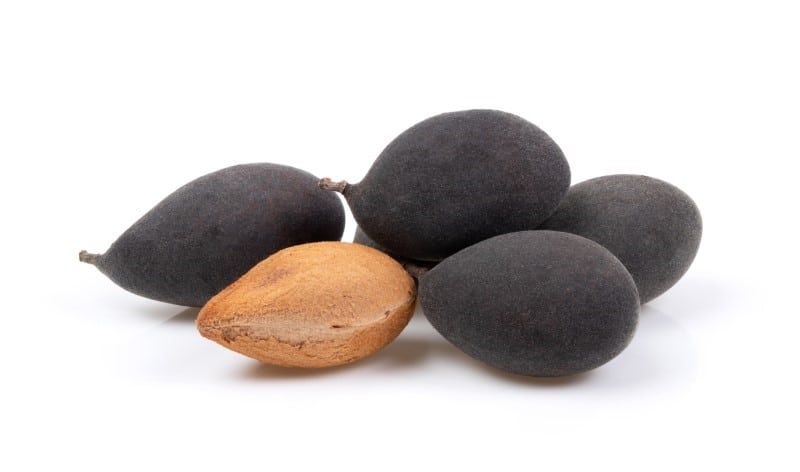
Popularly known as velvet tamarind and scientifically referred to as dialium cochinchinense. The plant is native to Ghana, Sri Lanka, Cambodia, Laos, Malaysia, Myanmar, Nigeria, Thailand, Vietnam, and most west African countries. The velvet tamarind is a medium tropical tree that grows to a height of between 25-80 cm. It mostly grows in dense semi-deciduous and evergreen forests. The fruit is enclosed in a pod of approximately 18-20 millimeters long, and it contains flat brown seeds embedded in a sticky, sweet, yellowish, and edible substance. When mature, the fruit turns black and is harvested by breaking the fruit branchlets.
The fruit can be eaten raw or even soaked in water to make a beverage. The velvet tamarind is also used to prepare meals such as making dessert by mixing Xaoy with sugar and chili peppers and can also be soaked in water to make a very refreshing beverage. The health benefits of Xaoy are numerous since it Is rich in sodium, iron, magnesium, vitamin C, and potassium. The various diseases that can be treated with the aid of velvet tamarind include ulcers, hypertension, malaria, toothaches, jaundice, and diabetes management. Tamarind is very popular worldwide and can be found in any grocery store. The barks of the tree can be used in the production of brown dye, while the wood obtained can be used as timber.
Xoài

Xoài is one of the most popular fruits globally as it is commonly referred to as mango and scientifically known as Mangifera indica. It is believed that they originated from Myanmar, Bangladesh, and Northern India. Since it does not require complicated conditions to grow, mangoes grow at least in each country. When ripe, Xoài tends to be very sweet and fleshy. The best thing about mangoes is that they are edible immediately after becoming mature. Different types of mangoes have different types of small, which can help you spot a ripe mango. The smell is usually very pleasant and mouthwatering.
There are various ways in which Xoài can be eaten, either raw, pickled, or canned. Mangoes can also be cooked based on your liking. The most common cuisines of cooked mangoes are chutneys, daals, or pickles, commonly served with rice. Since mangoes are very juicy, they can be blended to create a smoothie, juice, or mango lassi, which involves mixing the pulp extract with sugar or milk. This delicacy is very popular in South Asia. Ripe mangoes can also be used to make curries. Mangoes contain lots of nutrients that help lower calories, prevent diabetes, boost your immunity, and improve your digestive function since it is a very good source of fiber and roughage. Mangoes are available in almost every grocery store or market worldwide.
Xarello
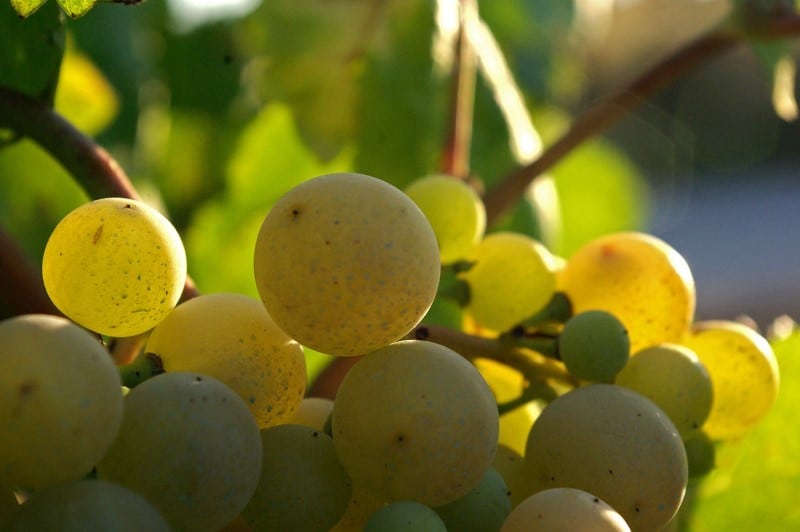
These are one of the most world-renowned varieties of grape. These grapes are usually light-colored with a hint of green and some brown spots. These crapes are from the species Vitis vinifera, which is just the common grape, but the difference between the two is predominantly based on the appearance of the grapes. These types of grapes are native to Spain, especially in the Catalonia region of the country. Xarello is one of the traditional varieties of grapes used to make the sparkling wine cava.
The taste of these grapes is very exquisite, and it is more aromatic than the other variety of grapes. This property is why the cava wine is the most sought-after in the European continent. The grapes can also be eaten either raw or mixed up with refreshments like ice cream or yogurt. The health benefits of the Xallero grapes include boosting your immune system and lowering the cholesterol in your body and blood pressure. The potassium levels are high, thus protecting the heart from diseases. With minerals like calcium and magnesium, and vitamin K present in the grapes, you are assured of strong bones. With its anti-oxidant components and properties, these grapes help prevent cancer.
Xiangjiao
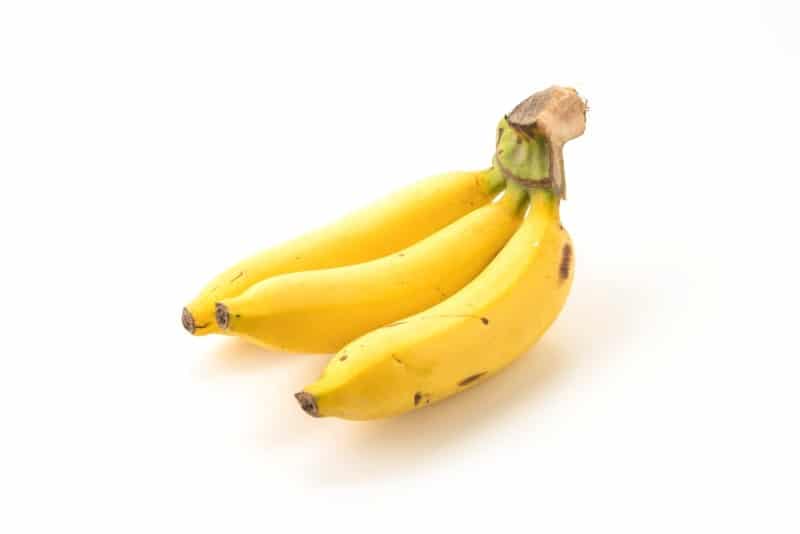
Xiangjiao is popularly known as bananas. There are three types of bananas: Musa acuminata, Musa balbisiana, and Musa paradisiaca, a hybrid of the former two. Bananas are regarded as the largest herbaceous flowering plant in the world, and they grow in a variety of soil as long as the soil is at least 60 centimeters deep and has good drainage. Banana is grown in almost every part of the world, either on plantations or farms. Also, sometimes, they grow in the wild. The growth and size of cultivated bananas depend on the growing conditions.
When ripe, bananas are very sweet and very aromatic. There are many ways in which you can eat a banana; you can either eat them raw or cooked. The method of preparing cooked bananas depends entirely on the region you come from since each area has a different way of preparing them. Ripe bananas can also be blended to make juice or smoothies. Bananas contain lots of nutrients such as vitamin B6, C, A, and magnesium required to maintain a healthy body. The health benefits of bananas include helping manage your blood pressure since it contains high potassium levels. The fiber and roughage from the bananas help reduce cholesterol and inflammation. Bananas are available in any store next to you. in some regions of the world, both the banana leaves and flowers are used as a delicacy. The leaves can also be dried and used as reeds. You can make various recyclable items such as handbags.
Xanthium
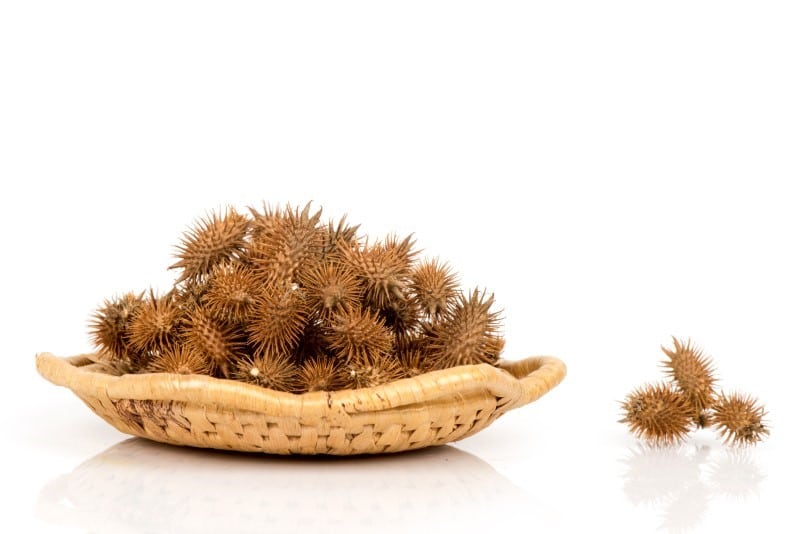
Also referred to as cocklebur and scientifically known as Xanthium spinosum. They are predominantly found in North America and some parts of Asia. The fruit is yellow and consists of a coarse and spikey outer membrane. Though they may taste like sunflower, you are highly recommended not to consume them due to the Carboxyatractyloside in the seed, which can cause low blood sugar, severe liver injury, seizures, and abdominal pains. Though considered poisonous, Xanthium is often used in traditional Chinese remedies where it serves as a painkiller and reduces soreness. The toxicity of the fruit is neutralized by washing the fruit in freshwater or by exposing them to heat.
Xylocarpus Granatum
This fruit grows on the Xylocarpus Granatum tree, a species of the mangrove of the mahogany family, which is native to the tropical areas of East Africa, Asia, Papua New Guinea, and the pacific islands. This fruit goes by a variety of names depending on where they grow. Its scientific name is Xylocarpus granatum J. Koenig. The fruit is enclosed in a woody capsule and is a bit huge, with a diameter of between 10 to 25 centimeters. Once the fruit ripens, it falls to the ground and cracks open. When it fully matures, the inside of the fruit splits into four, with each portion containing up to 20 seeds.
The fruit can be eaten directly from the tree though it contains a sour aftertaste. Most individuals prefer using it to prepare fish to give the dish a tart flavor, mostly common with boiled fish. This fruit is known for its ethnobotanical properties; thus, it is used to treat diseases like cholera, and in Malaysia, it is used to prepare traditional medicine. Mature trees act as a source of good and reliable timber.
Xinomavro
Xinomavro is a species of grapes also referred to as Xinomavro, Popolka, and Mavro Naoussis. These grapes mainly grow in Northern Macedonia, Greece. They are primarily grown in the vineyards of Naousa, Rapsani, Goumenissa, Trikomo, Amyntaio, Velventos, and Siatista. The color of Xinomavro grape skin is black and has a thin inky-cyan outer shell. These grapes are one of the principal red wine grapes of Greece. The name Xinomavro stands for ‘sour black.’ The wine produced from these grapes has become one of Greece’s most valuable and well-considered wines. Xinomavro grapes are spherical and medium-sized. The juice and smooth pulp of this grape are white, and the raw juice of Xinomavro grapes is colorless.
The taste of the Xinomavro grape is sour, and the wine produced from it has medium-high acidity and high tannins. Xinomavro grapes have a unique aroma and taste, which most people describe as an earthy flavor with olive, tomato, and spice hints. Besides winemaking, xinomavro grapes can be eaten raw, just like normal grapes. You can choose to consume xinomavro grapes with ice cream, slushie, or even use them to top up your salad. The health benefits of Xinomavro grapes include boosting your immune system and lowering blood pressure and cholesterol in your body. With its anti-oxidant components and properties, these grapes help prevent cancer. The potassium levels are high, thus protecting the heart from diseases. Thanks to vitamin K and minerals like calcium and magnesium present in the xinomavro grapes, you are assured of strong bones. Despite being predominantly grown in Greece, the xinomavro grapes are available worldwide.
Xing Zi
Most commonly referred to as apricot, categorized under the species P. armeniaca. It is unknown where they first appeared from, with different research yielding different results. The apricot tree only grows to the height of between 8-12 meters tall and between 40 centimeters wide. The Xing zi fruit resembles a peach, thus being regarded as a drupe. The color of the fruit varies since it can either be yellow or orange, with the side most exposed to the sun appearing to be red. The fruit surface is always very smooth. Xing zi is made up of very succulent flesh, yet some species can be a little bit dry. The taste of the apricot ranges between tart and sweet. The fruit always smells sweet when ripe. There is a seed located in the middle of the fruit. Xing zi can be eaten either cooked or raw. When cooked, the apricot is a very good companion to various dishes, especially Moroccan dishes. During the month of Ramadhan, apricot beverages are very popular, especially in the north African and middle east regions.
You can also preserve Xing zi by either drying or canning. Other uses of the fruit include making jam wines and pies. Xing zi contains both vitamin A and iron. Xing zi is low in fat but rich in vitamin A and beta-carotene. These nutrients act as anti-oxidants to protect your cells from damage. Xing zi is also a good source of flavonoids, an anti-oxidant that helps protect against inflammatory illnesses and inflammation. They also aid in reducing the risk for obesity, heart disease, and diabetes. The main flavonoids in apricots are catechin, chlorogenic acids, and quercetin. Other health benefits include healthy vision and skin protection.
Xilacayota Squash
Xilacayota Squash is part of the squash family. They are believed to have originated from Central America. Its physical appearance resembles that of a pumpkin or watermelon. A mature Xilacayota Squash weighs about 2-6 kilograms and contains almost 500 seeds. When matured, the squash tastes sweeter and smells like a melon. The skin is always soft but hard and tough. The whole fruit is edible, including the seeds and the skin. The health benefits of Xilacayota Squash include increased bone strength, poses components that act as anti-depressants and the anti-oxidants are renowned for their anti-inflammatory properties. You can find Xilacayota Squash at the grocery store near you.
The Final Letter
These fruits possess a unique quality waiting for you to discover since we all have different tastes, preferences, and likes. It is important that before you try something exotic or new, you should be aware if you are allergic to it. You can use this knowledge to help you try out some new recipes. You should never limit your palate; make sure that you have exposed it to every single fruit available to you until you find your fruit.


